A few months ago, we reviewed the original GoWin R86S. It was an incredible little machine with a very different premise. Instead of competing as the lowest-power Intel N5105/N6005 system, or being fanless, or settling for a few 2.5GbE ports, the original R86S offered 10GbE SFP+. Today, we have a new version of the R86S-N that was made especially for STH. Since it is a special model, we are going to call it the R86S Pro since it does not have a name, but if it did, that is what it should be called. This model has 25GbE SFP28, twice as much memory, and twice as many cores, and fixes our chief challenge with the original model. Let us get to it.
GoWin R86S Pro Overview
Of course, we have a video for this review. That video also has a special cameo from the iKoolCore R1‘s new R1 Pro version. You can find it here:
As always, we suggest opening this in a new browser window, tab, or app for a better viewing experience.
Since we have a slightly different version than is common, the closest configuration to what we have is the GoWin R86S-N305B. That is currently $550-600 and comes with the same Intel Core i3-N305 CPU, 32GB of memory, a 128GB eMMC onboard storage option, and dual SFP+ 10GbE. Our option simply swaps the 10GbE NIC for a 25GbE option.
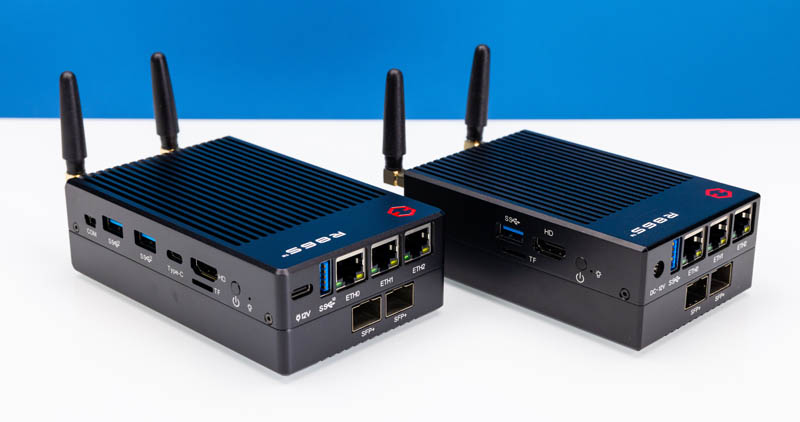
While this may seem strange at first, it is set to be an option on the 1U variant of this system in the future. Hopefully, we will get to bring you that review as well. We were doing some early testing of the 25GbE option in this form factor and thought it would be interesting to review. Of course, since this is not exactly a public model, it was sent as a special model from GoWin. We also ordered several R86S SFP+ units after our previous review because we liked the solution that much.
With that, let us get to the hardware.
GoWin R86S-N External Hardware Overview
The GoWin R86S is known for being small, but the new N variant is slightly larger than its predecessor. As we will explain later in this review, this is an excellent product design decision.
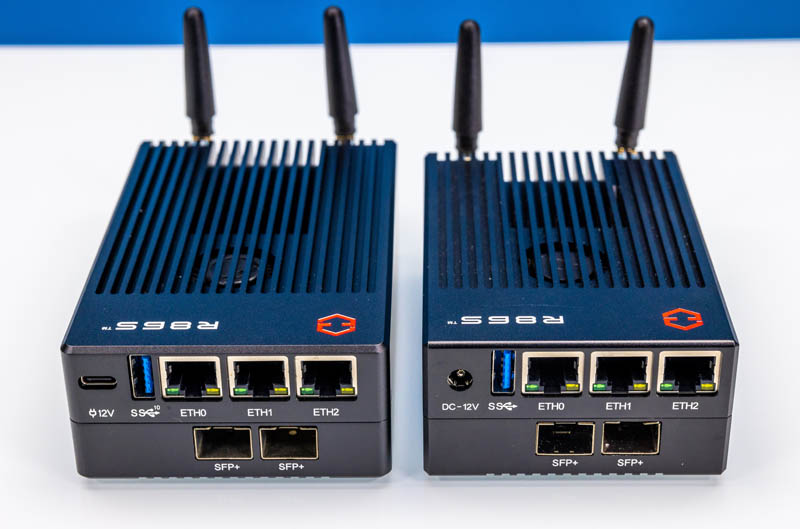
In some photos, these will look like fanless units. Let us be clear, the chassis may be metal and may help to dissipate heat, but there are internal fans to help airflow. We can see one of these on top of the unit.
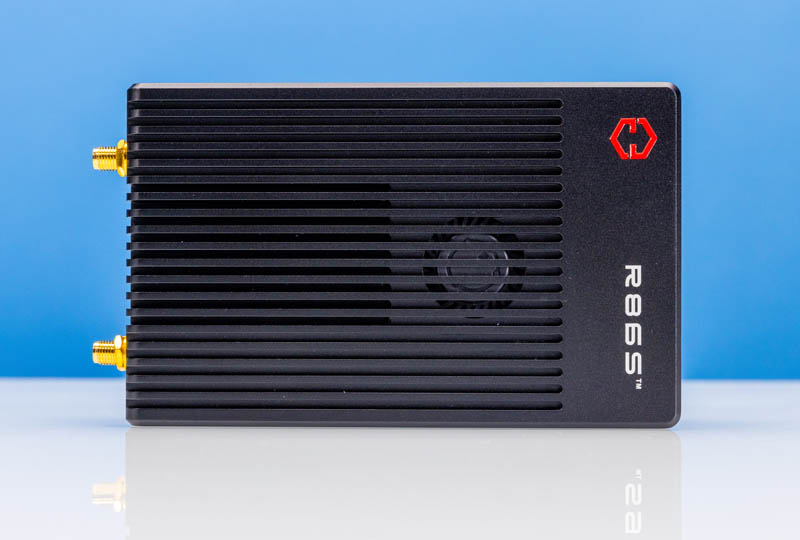
One side is blank, and if you never open the system, you will have no reason to visit this side of the chassis.
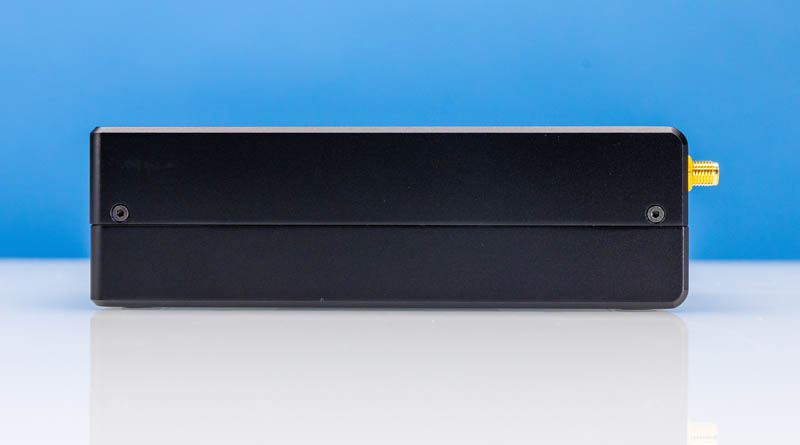
The big features, however, come with the ports. We get a 12V DC input in a Type-C jack. There is a USB 3 port and three Intel i226-V Ethernet ports. The SFP+ ports in a standard R86S-N would be 10GbE ports. In our one-off sample, these are 25GbE SFP28 ports.
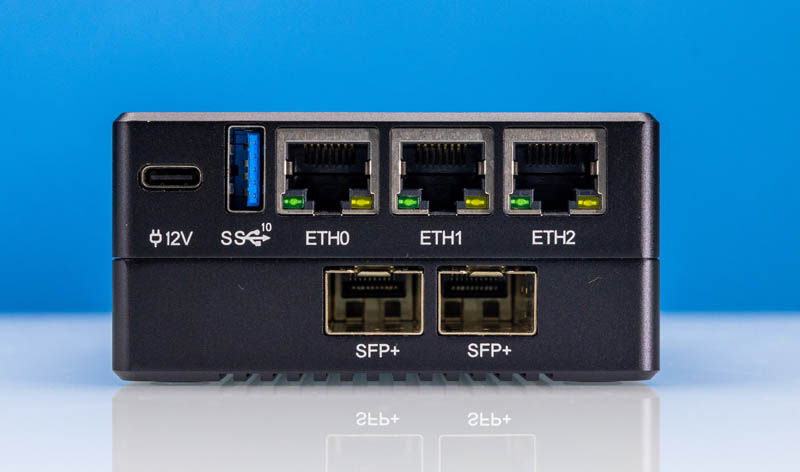
Aside from that 25GbE one-off change, the big changes are to the USB and DC inputs. We probably prefer standard barrel jack 12V DC inputs because that makes them a bit easier to power over PoE++ with splitters, but that is certainly a more personal preference.
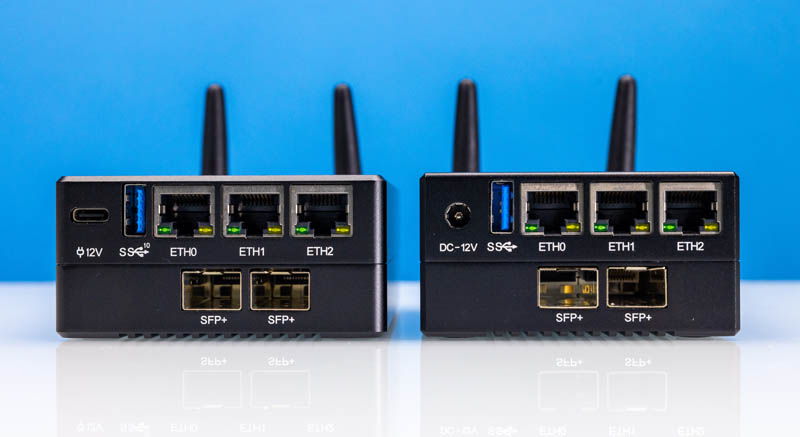
On the side of the system, we see the biggest upgrades. We get a micro USB COM port, a feature many want on firewall devices. We get two Type-A and one Type-C port, a HDMI port, and a TF card slot.
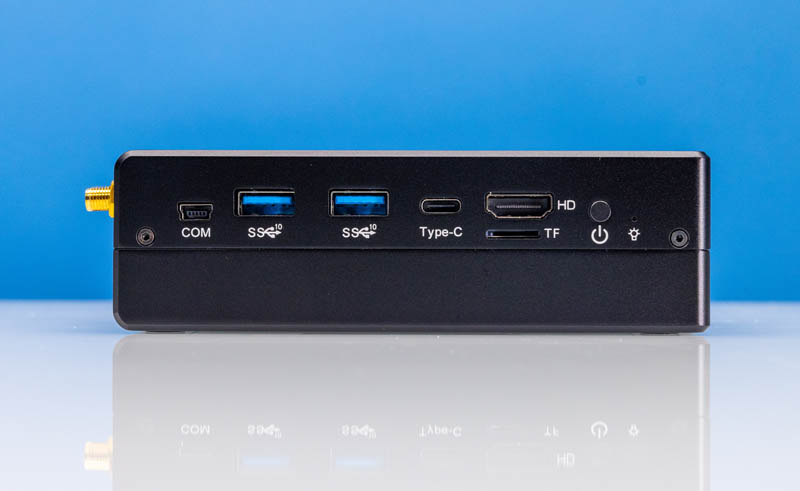
On the original R86S, a big point of feedback was that there were two USB ports. From a usability standpoint, that was less than ideal as one can imagine installing an OS from a USB stick and then plugging in either a keyboard or a mouse, but not both. In this new generation, GoWin delivered with more USB connectivity in addition to the COM port.
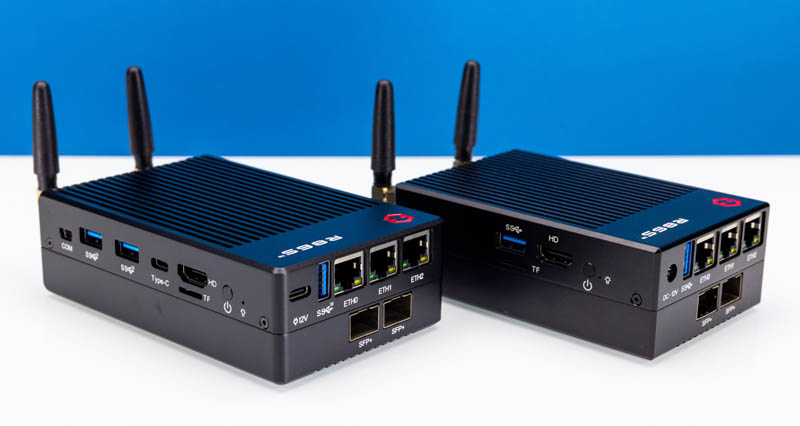
On the back, there are spaces for antennas. Ours came with small antennas, but we are fairly sure some of our readers will immediately have visions of larger antenna arrays.
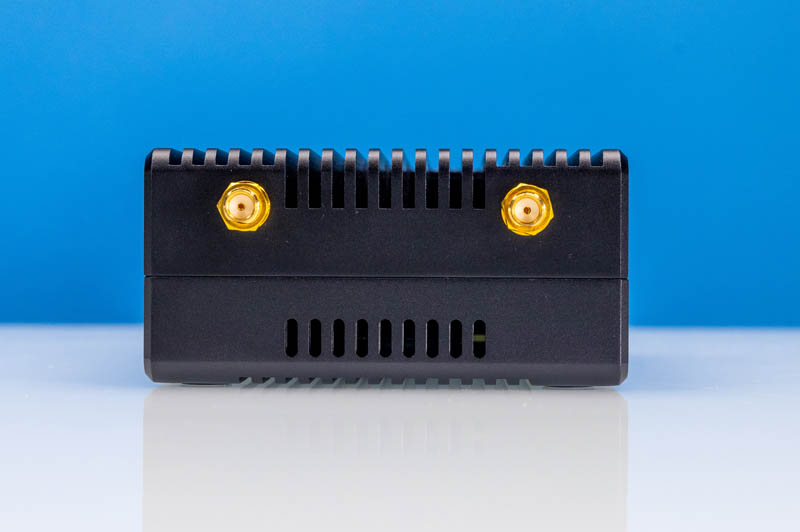
Next, let us get inside the system.

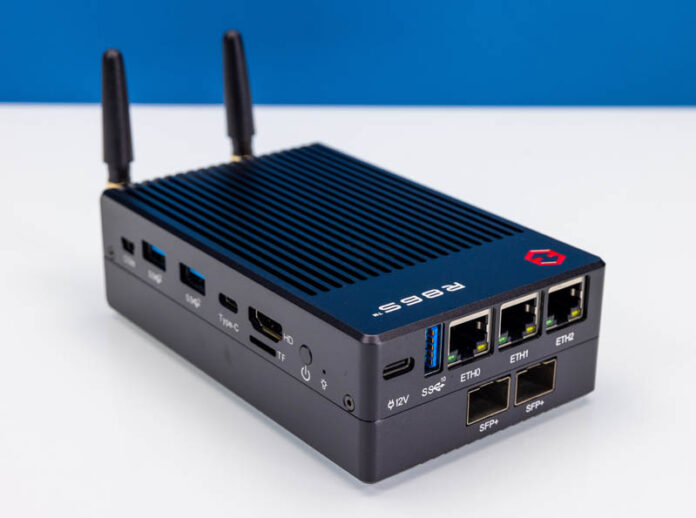



Can the 25gbe SFP+ ports negotiate and run at other speeds like 10gbe, 5gbe, 2.5gbe, or 1gbe?
Hot damn. These would be perfect here in Switzerland. Init7, a local ISP, will give you 25Gbps FTTH as a one-off upgrade, no change to monthly costs. The main obstacle is the cost of equipment to handle 25Gbps but these boxes look perfect.
It cannot fully exploit the 25 Gb interfaces and it is CPU-wise far inferior to most other options. I have to ask what is the point? Interfaces on the front _and_ the side. The layout is not optimal.
Once upon a time there was a Raspberry Pi with 1 Gbps Ethernet connected through USB 2. The resulting packet loss conspired with Internet latency and switches with no flow control for throughput that ended up below 100 Mbps.
In my opinion any system that can’t receive packets at wire speed (whatever that speed may be) is likely to experience similar problems.
@emerth Totally agree. These are being revered by STH and a small almost religious following for the cuteness factor alone. Fans that are non standard and CPU that are underpowered for the NIC interfaces and in small formfactor for the cuteness factor alone.
x86S team needs to rethink the design, it needs standard replacable fans as a minimum also larger footprint, but then it will look like any of the other 117 other options on the market, maybe the 10gig or 25gig interfaces being the only distinguishing attribute.
I would like to know if you could disable unneeded chips like sfp+ ports. they are definitely useful but I expect most would want this as future proofing but as most have 1gbit internet or slower right now, leaving those sfp+ chips idling would be chewing 5 watts. Similarly, many wont be using wifi chips so wont need it inbuilt.
Nigel – You can use the NVMe bottom and remove the NIC completely.
Lance – I guess my question is whether you have used the R86S original or the new N305 one reviewed here? As someone who has personally used over 117 different mini PCs/ 1L PCs in the last three years (there are ones we never reviewed as well) you are right my team and I like the R86S and this new version. We bought more R86S’s and we use them all the time.
It’s R86S-N305C
there’s a reference to a potential 1U, anymore info on that?
John – I think it is launching this month and we are getting one, the early sample has not arrived yet.
Any idea whether that short M.2 slot on the alternate bottom supports 2230 sized storage (like in the Steam Deck) vs. only wi-fi? I’d love to use that for the boot drive for proxmox/truenas and pass-through the other 3 m.2 slots I’d have in that configuration for a zfs pool.
Oh man, with the Mellanox Connect-4 Lx board this looks perfect for what I want it for. Only interested in 10 Gbps operation with the SFP28 ports.
They have the version with a CX-4 Lx up on AliExpress now, but at quite a premium.
I’m not really sure what the purpose of these devices are. Are they for network routing? If so how do you rackmount them when some of the sockets are on the side, or access the button on top? Perhaps they are only meant to sit singly on a desk? If so, it will look a bit messy with all the cables sticking out in every direction. Are they meant for outdoor use with WiFi links? If so do they have suitable outdoor enclosures?
Compare this to say MikroTik, who have router designed products that can be stacked in a 2×2 configuration and rack mounted in a 1U space, with all sockets accessible on the front and back. They have outdoor products too that ship already in waterproof enclosures. They also have products aimed for desktop use with all the sockets on the back so that cables neatly flow down behind a desk reducing clutter.
It’s clear to me where each MikroTik product is targeted, but with something like this I’m not really sure what they are targeting, and the design seems to have too many compromises to make it practical in any particular environment.
It seems like the only use case is for the ultra budget conscious where practicality and tidiness take a back seat to cost. But then someone in that position seems unlikely to spring for 25 GbE gear so the Raspberry Pi seems more suitable for that market segment.
Unfortunately it is not in stock.
I am trying to recommend some systems for few friends that need small 25G router with few 2.5G ports and WiFi, and this is absolutely perfect in form factor and functionality. In fact there is nothing else like this.
(At home I have a bigger custom 25G router in 2U case; but some of my friends and clients, want something smaller and less ports)
The issue is probably that at full 25G it will be bottlenecked by CPU and thermals, so I understand it is not perfect. I am still searching for something small, and capable of 25G routing (IPv4, IPv6, with IPv4 NAT and few very simple port forwardings, not much more, probably running VyOS, or similar).
PS. servethehome rejects plus sign in my email address, despite it being totally valid address.
In a review (on STH or LevelOneTechs) of the earlier R86S, there was a hint that they were working on a model that would work in WiFi Access Point mode, instead of only Client mode. I don’t see anything about Access Point mode in this R86S-N model review. So, I’m wondering if there’s any additional info about the “Access Point” model (name / PN / availability)?
It’s a nice concept. It feels great in the hand and looks the part. But watch out if you need any form of support or if something goes wrong. I purchased two of the N305 models. There are some significant design and manufacturing failures from damaged internal ribbon cables, bad thermal connection, to non-op/dead wifi. The worst part is the total absence of meaningful support. Their single customer facing rep, David, promises action and follow-up but then does neither. Always claims to be traveling. I can’t even get them to provide an address to return things. Zero response.